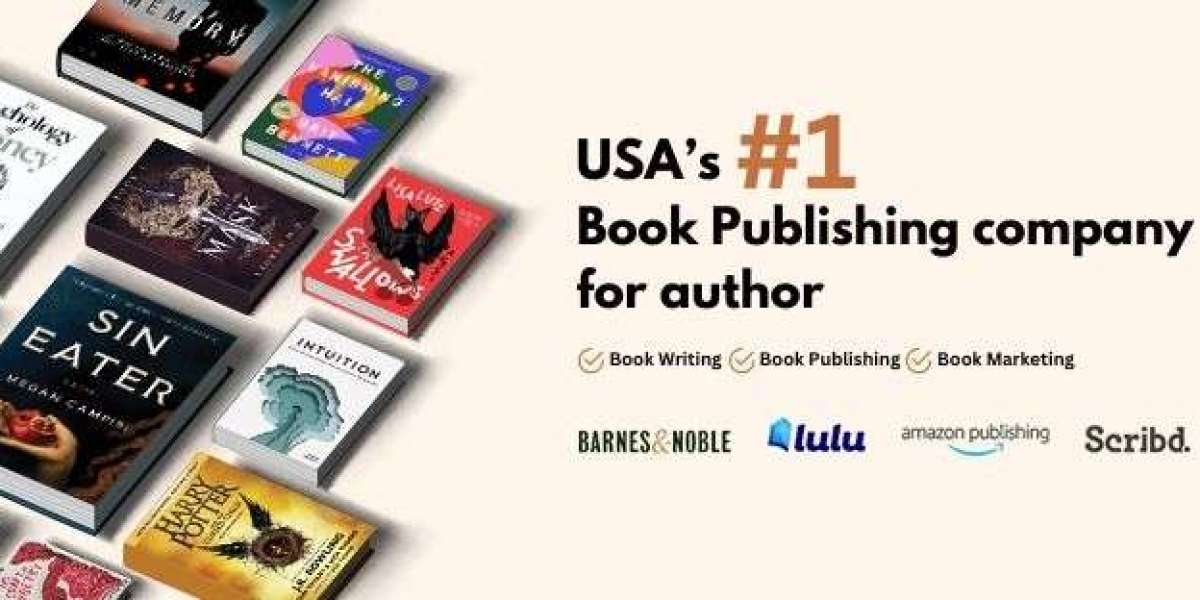Publishing your book is an exciting but often overwhelming process. With so many paths to choose from, understanding the range of book publishing services in USA can help you make informed decisions. Whether you're a first-time author or a seasoned writer, knowing how traditional, self-publishing, and hybrid models work will determine the success and direction of your project.
Let’s break down these three main publishing routes, highlighting the benefits and challenges of each.
Traditional Publishing: The Established Route
For decades, traditional publishing has been seen as the most prestigious path for authors. This model typically involves submitting your manuscript to literary agents, who then pitch it to large publishing houses such as HarperCollins, Simon & Schuster, or Penguin Random House. If a publisher accepts your manuscript, they handle all aspects of production, distribution, and marketing while absorbing the costs.
Key Advantages:
- Professional Expertise: Traditional publishers bring a team of editors, designers, and marketers to ensure your book is polished and widely promoted.
- No Upfront Costs: The publisher covers all expenses, from editing and printing to distribution and promotion.
- Wide Distribution: Books published traditionally have access to brick-and-mortar bookstores, libraries, and major online retailers, giving your work a wide reach.
- Credibility: Having your book published by a traditional house lends credibility to your work, which can help with future projects and professional growth.
Drawbacks to Consider:
- High Competition: Landing a traditional publishing deal is extremely competitive, especially for debut authors.
- Long Timelines: The traditional publishing process can be slow, often taking a year or longer from acceptance to release.
- Less Creative Control: Publishers often have the final say on key aspects of the book, including its title, cover design, and marketing strategies.
- Lower Royalties: Although the publisher covers costs, the author typically receives lower royalty rates, usually between 10-15%.
Self-Publishing: A New Era of Independence
Self-publishing has exploded in popularity in recent years, thanks to platforms like Amazon Kindle Direct Publishing (KDP) and IngramSpark. This model offers full control to the author, allowing them to manage every aspect of their book’s production, distribution, and promotion. While self-publishing provides authors with creative freedom, it also requires them to invest their own time and money into the process.
Key Advantages:
- Complete Control: From cover design to pricing and marketing, you have the final say on all decisions.
- Faster Time to Market: Unlike traditional publishing, self-publishing allows you to bring your book to market quickly, often in a matter of weeks.
- Higher Royalties: Self-published authors generally earn more per sale, with royalties as high as 70% on platforms like Amazon KDP.
- Direct Engagement with Readers: Self-publishing platforms allow for a closer connection with readers, providing real-time feedback and marketing opportunities.
Drawbacks to Consider:
- Upfront Investment: The author is responsible for covering all costs, including editing, cover design, and marketing.
- Marketing Burden: All promotional responsibilities fall on the author, which can be challenging without the proper knowledge or resources.
- Limited Bookstore Access: While self-published books do well online, it can be difficult to get them into physical bookstores without a strong network.
- Quality Concerns: Without professional guidance, self-published books may lack the polish that comes from a traditional publishing team.
Hybrid Publishing: The Best of Both Worlds
Hybrid publishing is a middle ground between traditional and self-publishing. With this model, authors pay upfront for services like editing, design, and marketing, while hybrid publishers provide the professional expertise and infrastructure that traditional publishers offer. This allows authors to retain more control while receiving professional support.
Hybrid publishers, such as She Writes Press and Greenleaf Book Group, combine the strengths of both worlds, giving authors more flexibility while ensuring a high-quality final product.
Key Advantages:
- Professional Quality: Hybrid publishers offer the same editorial and design services as traditional houses, ensuring your book looks and reads professionally.
- Author Control: You maintain more control over creative decisions compared to traditional publishing.
- Higher Royalties: Since hybrid publishers take a smaller cut of the sales, authors typically earn higher royalties than they would with a traditional publisher.
- Faster Timeline: The production and release timelines are generally faster than traditional publishing.
Drawbacks to Consider:
- Upfront Costs: Like self-publishing, hybrid publishing requires authors to cover the costs of production and marketing services.
- Research Required: Not all hybrid publishers offer the same level of quality or service, so it’s essential to thoroughly research your options.
- Distribution Limits: While hybrid publishers have some distribution capabilities, they may not have the same reach as large traditional publishers.
Which Path Should You Choose?
With the wealth of book publishing services in the USA, how do you decide which is best for your book? Here are a few factors to consider:
Creative Control: If retaining full control over every aspect of your book is a priority, self-publishing is likely your best option. Hybrid publishing allows for more flexibility than traditional publishing but still includes professional oversight.
Budget: Traditional publishing won’t cost you anything upfront, but you’ll earn lower royalties in the long run. Self-publishing and hybrid publishing require more financial investment upfront but often yield higher earnings per book sold.
Timeframe: Traditional publishing takes the longest, while self-publishing offers the fastest route to market. Hybrid publishing offers a middle ground, combining professional support with a quicker turnaround than traditional models.
Distribution Goals: If getting your book into brick-and-mortar bookstores is important to you, traditional publishing provides the broadest access. Self-publishing is largely focused on online platforms, while hybrid publishers offer limited in-store distribution.
Marketing Support: If you want to focus on writing and leave the marketing to professionals, traditional publishing is a better fit. Self-publishing and hybrid publishing will require you to take on more marketing responsibilities, though hybrid publishers typically offer some support.
Conclusion
The world of book publishing services in the USA is rich with options for authors, whether you’re seeking creative independence, professional support, or a balance between the two. Each path has its own strengths and challenges, so take the time to assess your goals, resources, and expectations.
Traditional publishing offers prestige and broad distribution, but requires patience and persistence. Self-publishing allows for creative freedom and higher royalties, but demands a financial and marketing commitment. Hybrid publishing strikes a balance, giving authors control with the backing of professional services.
Ultimately, the right choice depends on your vision for your book. Whichever path you choose, your story is worth telling.







